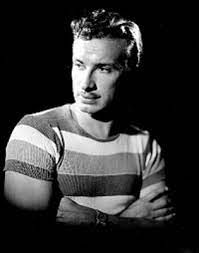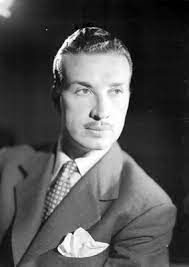Actor. Born Cruz Pío Socorro Alvarado Bolaños in San José, Costa Rica, at 18, he relocated to Mexico, where he initially ventured into wrestling. His association with notable wrestling figures such as Jesús Murciélago Velázquez and Daniel Aldana honed his skills and paved the way for a budding career. However, it was his friendship with Jorge Negrete that nudged him towards cinema. Alvarado began his acting journey with minor roles until Negrete granted him a significant part in the film "El Cementerio de las águilas" (1939), marking his entry into the world of Mexican cinema. Alvarado's prominence in the film industry solidified in 1944 when he landed the lead role in "Naná." Following this success, he secured pivotal roles and delved into cartooning for magazines like "Filmográfico" and "Cinema Reporter," where he showcased his talent by illustrating national and international film stars. As his acting career flourished, he gained recognition for his standout performances in movies like "Pasiones tormentosas" (1946), "Yo maté a Rosita Alvirez" (1947), "Si Adelita se fuera con otro" (1948), and "Doña Diabla" (1950), among others. Throughout the 1950s, Alvarado collaborated closely with Jorge Negrete within the National Association of Actors (ANDA). Despite the loss of Negrete in 1953, Alvarado's career continued to thrive. He starred in significant films like "La Bestia magnífica," pioneering the wrestling genre, and featured in "La Red" (1953), which earned critical acclaim at the Cannes Film Festival. Transitioning into the 1960s, Alvarado became a leading figure in films, notably in the burgeoning Mexican science fiction genre. His involvement in cult classics like "Ladrón de cadáveres" (1957) and the "La Momia Azteca" trilogy (1957-1958) cemented his status as a revered actor. In the late 1960s and 1970s, he ventured into scriptwriting and continued his contributions to cinema until his final on-screen appearance in "El Sargento Capulina" (1983), alongside the comedian Gaspar Henaine "Capulina."
Actor. Born Cruz Pío Socorro Alvarado Bolaños in San José, Costa Rica, at 18, he relocated to Mexico, where he initially ventured into wrestling. His association with notable wrestling figures such as Jesús Murciélago Velázquez and Daniel Aldana honed his skills and paved the way for a budding career. However, it was his friendship with Jorge Negrete that nudged him towards cinema. Alvarado began his acting journey with minor roles until Negrete granted him a significant part in the film "El Cementerio de las águilas" (1939), marking his entry into the world of Mexican cinema. Alvarado's prominence in the film industry solidified in 1944 when he landed the lead role in "Naná." Following this success, he secured pivotal roles and delved into cartooning for magazines like "Filmográfico" and "Cinema Reporter," where he showcased his talent by illustrating national and international film stars. As his acting career flourished, he gained recognition for his standout performances in movies like "Pasiones tormentosas" (1946), "Yo maté a Rosita Alvirez" (1947), "Si Adelita se fuera con otro" (1948), and "Doña Diabla" (1950), among others. Throughout the 1950s, Alvarado collaborated closely with Jorge Negrete within the National Association of Actors (ANDA). Despite the loss of Negrete in 1953, Alvarado's career continued to thrive. He starred in significant films like "La Bestia magnífica," pioneering the wrestling genre, and featured in "La Red" (1953), which earned critical acclaim at the Cannes Film Festival. Transitioning into the 1960s, Alvarado became a leading figure in films, notably in the burgeoning Mexican science fiction genre. His involvement in cult classics like "Ladrón de cadáveres" (1957) and the "La Momia Azteca" trilogy (1957-1958) cemented his status as a revered actor. In the late 1960s and 1970s, he ventured into scriptwriting and continued his contributions to cinema until his final on-screen appearance in "El Sargento Capulina" (1983), alongside the comedian Gaspar Henaine "Capulina."
Bio by: Shubham
Advertisement
See more Alvarado memorials in:
Explore more
Sponsored by Ancestry
Advertisement



